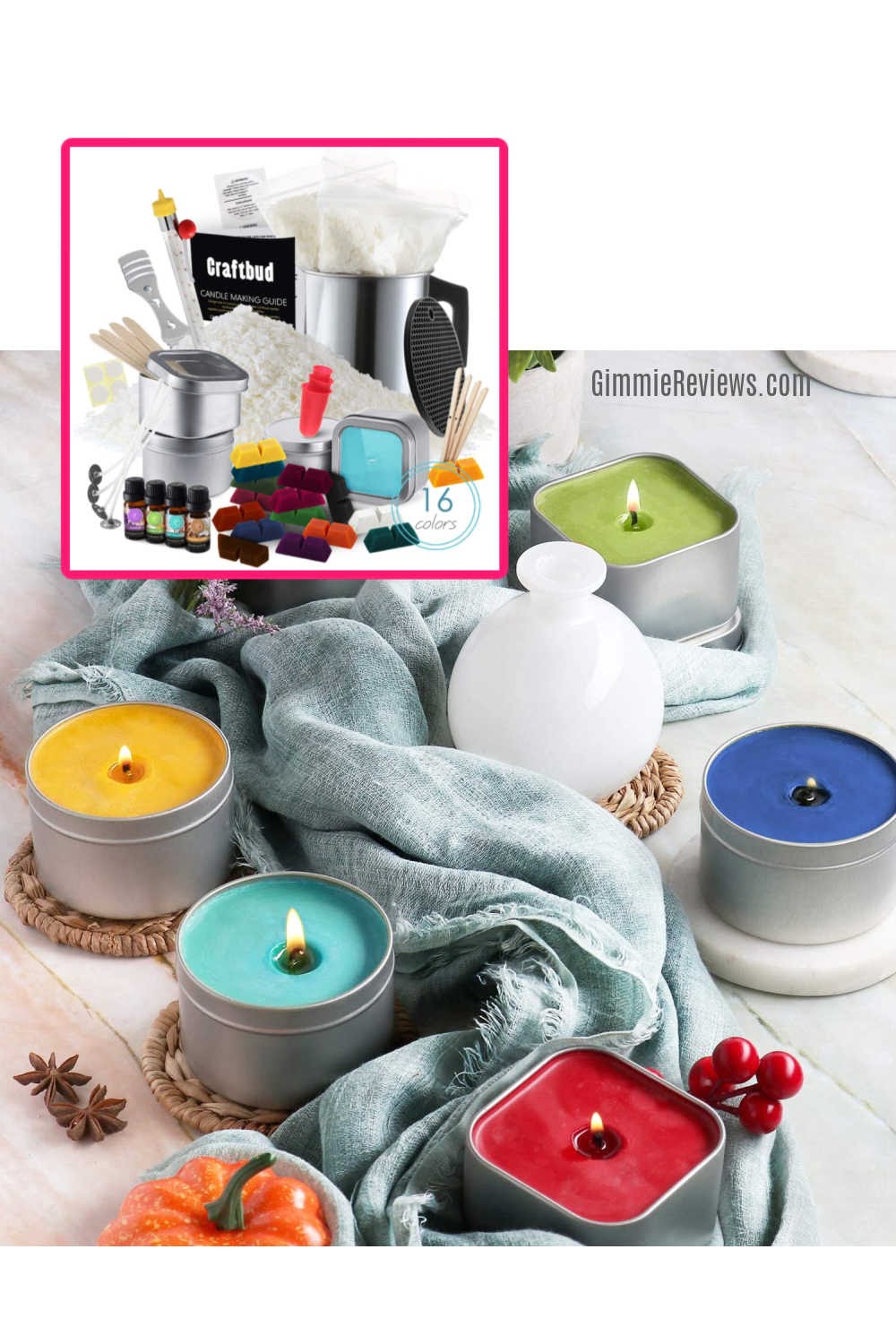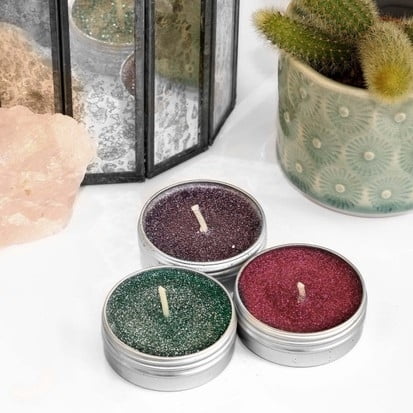Introduction What is Rendered Fat for Making Candles?
Rendered fat for making candles is a type of candle wax that has been melted down from animal fats (such as beef or sheep tallow) and then re-purposed into formulating a candle wax. This type of wax was historically used in conjunction with beeswax to create different types of candles often used in ancient rituals and during religious ceremonies. Today, however, rendered fat candles are making a comeback as a popular item amongst modern-day DIYers and crafters looking to make burning items in an eco-friendly alternative to traditional paraffin wax.
Once the fat has been rendered, it can then be manipulated into soft pastel shapes before being poured into molds of different sizes. The rendered fat forms quite easily thanks to its low melting point, but can become quite brittle when cooled again if it is not solidified correctly. In order to improve upon its waxing capabilities, manufacturers will also add other ingredients such as antioxidants, fragrances and natural colourations like cinnamon or beetroot. Additionally, it is possible to cast your own beeswax or other vegetable oils into molds creating your own unique customized candle!
By using rendered fats instead of paraffin based candlewaxes, you get the added benefits of knowing that your item contains natural properties that won’t irritate skin or pollute the air like traditional paraffin based candles would do. Furthermore, many studies have noted that renewable sources such as animal fats produce substantially less carbon emissions than petroleum based products during their manufacturing processes, making them more environmentally friendly too.
Benefits of Using Rendered Fat for Making Candles
Using rendered fat for making candles is an excellent idea. In fact, there are several advantages to using this material. One of the most significant benefits is that it is a natural by-product so it’s a great way to use up something that would otherwise just be thrown away. Furthermore, since the fat has already been rendered and purified, it doesn’t have as much of an unpleasant smell when compared with other waxes and it burns more evenly and with more intensity than other types of wax. Additionally, since animal fats are harder than plant based waxes, they last longer and produce a cleaner flame due to their higher melting point. Finally, because rendered fat can be used for maing candles in combination with many essential oils or fragrance oils, it makes for a very pleasing aroma when burned.
Examples of Rendered Fats Used in Candle Making
Rendering fat for candle making involves melting animal fats, usually from pork or beef, and purifying them of any impurities. Typically, these will be tropical oils like palm or coconut for a softer texture than tallow wax. It is an inexpensive method of making homemade candles with a white or translucent appearance when burned. Other examples of rendered fat that can used in candle making include lard, ghee, and sheep suet. Beeswax is also popular in candle making as well; it has a smokeless flame and holds color dyes better than most types of rendered fat. Additionally, there are synthetic versions that mimic the properties and effects of natural restored fats but contain fewer impurities. These include paraffin waxes, which offer a heat-resistant product that can craft different textures depending on the additive and pouring temperatures used during production.
The Steps for Making Rendered Fat Candles
1. Collect the fat from animals such as cows, pigs, or sheep. It should be cut into small pieces to aid in the melting process.
2. Place the fat pieces in a saucepan and heat on low heat, stirring constantly until it becomes liquid.
3. Remove any bits of meat or bone that remain and pour the melted fat into a bowl to cool slightly.
4. Place your candle wicks in each candle jar and tie them around a pencil so they stay upright while you fill them with wax.
5. Once the fat has cooled enough to become solid but still malleable, ladle it into a large cooking pot over low heat until all of it is melted again. Stir in 1 part beeswax for every 8 parts fat for a harder wax with greater longevity once their burnt.
6. Allow the mixture to cool for 5 minutes before pouring it into your jars with wicks prepared earlier.. Set aside to let solidify before burning or gifting!
Tips for Choosing the Right Rendered Fat for Your Candles
Rendered fat is a great choice for candle-making as it creates an environmentally-friendly and long burning candle. When selecting the right rendered fat for your candles, there are a few tips to keep in mind. First of all, it’s important to consider the type of fat you want to use. Different types of rendered fats have different characteristics, so carefully select one that provides you with the desired look and burn time for your candles.
Next, it’s important to make sure the fat is properly deodorized and free from any taste that could be displeasing when burned in your candle holders. This can be done by either purchasing pre-deodorized fat or doing this process yourself at home. Finally, consider any additives such as fragrance oils that you may want to include in your candles. Additives like these can alter the consistency and even the color of certain types of rendered fats and can have an effect on the overall burning time of your candles.
The Best Pure Essential Oils to Enhance Your Rendered Fat Candles
There are a host of essential oils that will greatly enhance your rendered fat candles. Some of the most popular and commonly used oils include Litsea cubeba, Lavender, Peppermint, Orange, Lemongrass and Rosemary. Each oil has its own unique scent and therapeutic benefits.
Litsea cubeba is notable for its wonderful citrus-like aroma and calming attributes. Lavender offers a fragrance with Notes of fresh green Floral, wispy camphor, sweet musk and subtle powder. Its properties make it ideal for nurturing the soul during stressful times as well as improving sleep quality.
Peppermint is an uplifting scent that can stimulate the senses while Orange is an all-around invigorating oil with bright citrus notes that provide energy and refreshment to an area or space. Lemongrass will bring in an energizing aroma to any candle along with a hint of lemon zest. Finally, Rosemary’s woodsy undertone will further release any worries or stress while simultaneously lifting your spirits with a hint of mint and spearmint aromas.
These essential oils can can be added directly to your melted wax blend before pouring into the molds or sprinkled on top before the candle hardens once cooled down completely. Adding essential oils to your candles not only enhances the mood but can contribute stunning visuals due to their vibrant colors and sparkles too!
Important Safety Considerations When Working with Rendered Fat
When working with rendered fat for the purpose of making candles, it is important to take certain safety precautions into consideration. First and foremost, extreme caution must be taken when heating the fat. Wax burns at a low heat, so care should be taken to ensure that the flame is well-controlled while melting down the fat. Additionally, you should use a double boiler or hot plate specifically designed for melting wax or heating fats. Furthermore, safety goggles should always be worn when melting fats to protect against potential splatter and fumes produced during the heating process. Lastly, it is important to keep a fire extinguisher in close proximity just in case of an emergency. Following these safety protocols will help ensure that your candle-making process goes smoothly and safely.
Creative Ideas for Rendered Fat Candle Projects
Rendered fat makes the perfect materials for candle-making projects. Perhaps you have access to a slaughterhouse and consistently have a generous supply of lard or tallow, or maybe your local grocery store sells rendered pork fat in bulk—whatever your source may be, this sustainable, renewable material is easy to use for crafting beautiful and aromatic candles. You can discover how to make simple candles with containers and wax flakes or get creative with molds, tapers, and drip-stain techniques. Here are some great examples of creative projects you can do with rendered fat:
1. DIY Fat Ball Candles: Cut shapes from cardboard ‒ such as circles or squares ‒ then align them over an opened metal container lined with parchment paper or waxed muslin cloth; melt the fat until completely liquid and drop carefully down on the container. Let it cool before using scissors to cut off the extra material; repeat and create as many clusters as desired. Put them together in clumps/balls as centerpieces for your tablescape!
2. Taper Candles: If you’re looking for a more classic and traditional approach – try crafted tapered candles! Start by cutting off small pieces of fat and rolling them into small wick-sized tubes; apply candle wick to one end of each tube before pressing the other end around it so that they stay in place; let dry before arranging in molds; cover with melted fat until filled up; push a chopstick through each mold so that it touches the base allowing for even heat distribution; leave to cool; enjoy!
3. Drip Stain Candles: Preheat oven to 350°F (175°C); gather wax chips from an old white candle stub; spread these on a pan lined with parchment paper over low heat and continually stir so that excess moisture evaporates — when melted, pour directly onto any type of mold shape desired — once cooled, let candles stand overnight before using a hairdryer over low heat setting around its circumference — gradually tilt the hairdryer from one side of the wick upward towards the top in order to create unique drips — wait till these signs harden up before extinguishing any leftover flame — finish off by dusting lightly with whatever fragrance you like! That’s one stylishly cool candle!
Considerations for Storing Your Rendered Fat Candles
When it comes to storing your rendered fat candles, there are a few good things to consider. The first is ensuring that the candles are kept away from heat sources, such as direct sunlight, in order to prevent them from melting. If you’re going to be storing them for an extended period of time, keep them in a temperature-controlled environment for optimal results. It’s also important to make sure that you store them away from any strong-smelling foods or fragrances so that these don’t mix with the scent of the candle and create an unpleasant smell when lit. Finally, try as much as possible not to drop or knock over your candles since any damage could potentially ruin the overall look and feel of the product.
Wrap Up Why Rendered Fat Makes a Great Candle Ingredient
Rendered fat is used to make candles because it is an inexpensive, clean-burning source of fuel. It is also non-toxic and easy to light. Inexpensive compared to other types of wax such as soy or petroleum-based wax. When animal fat is used in candles, it results in a more intense fragrance than when burning plant-based waxes. Candles made with rendered fat will tend to have longer burn times than those made using alternative waxes. In addition, rendering the animal fat helps to remove any impurities or contaminants which may be present, making these candles safe for use by anyone. Designed properly, rendered fat makes extremely desirable candles that provide a pleasant aroma and flicker while creating a warm atmosphere in any room. Rendering the fat is also beneficial to the environment as no harmful pollutants are released into the air when burning these types of candles. All in all, rendered fat makes a great candle ingredient due to its affordability, ease of use, and environmental benefits which make it an ideal choice for many candle makers.

Welcome to my candle making blog! In this blog, I will be sharing my tips and tricks for making candles. I will also be sharing some of my favorite recipes.





